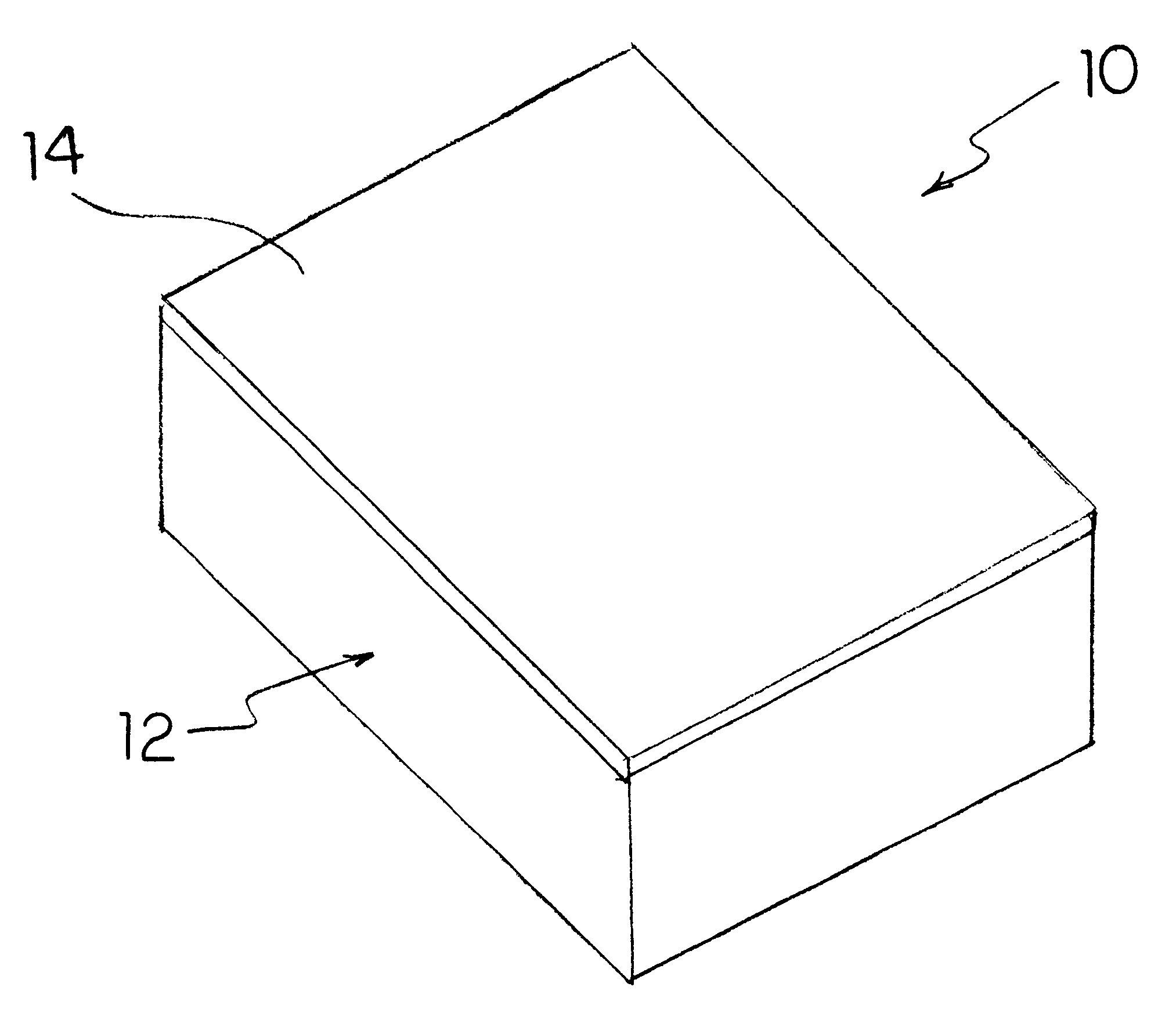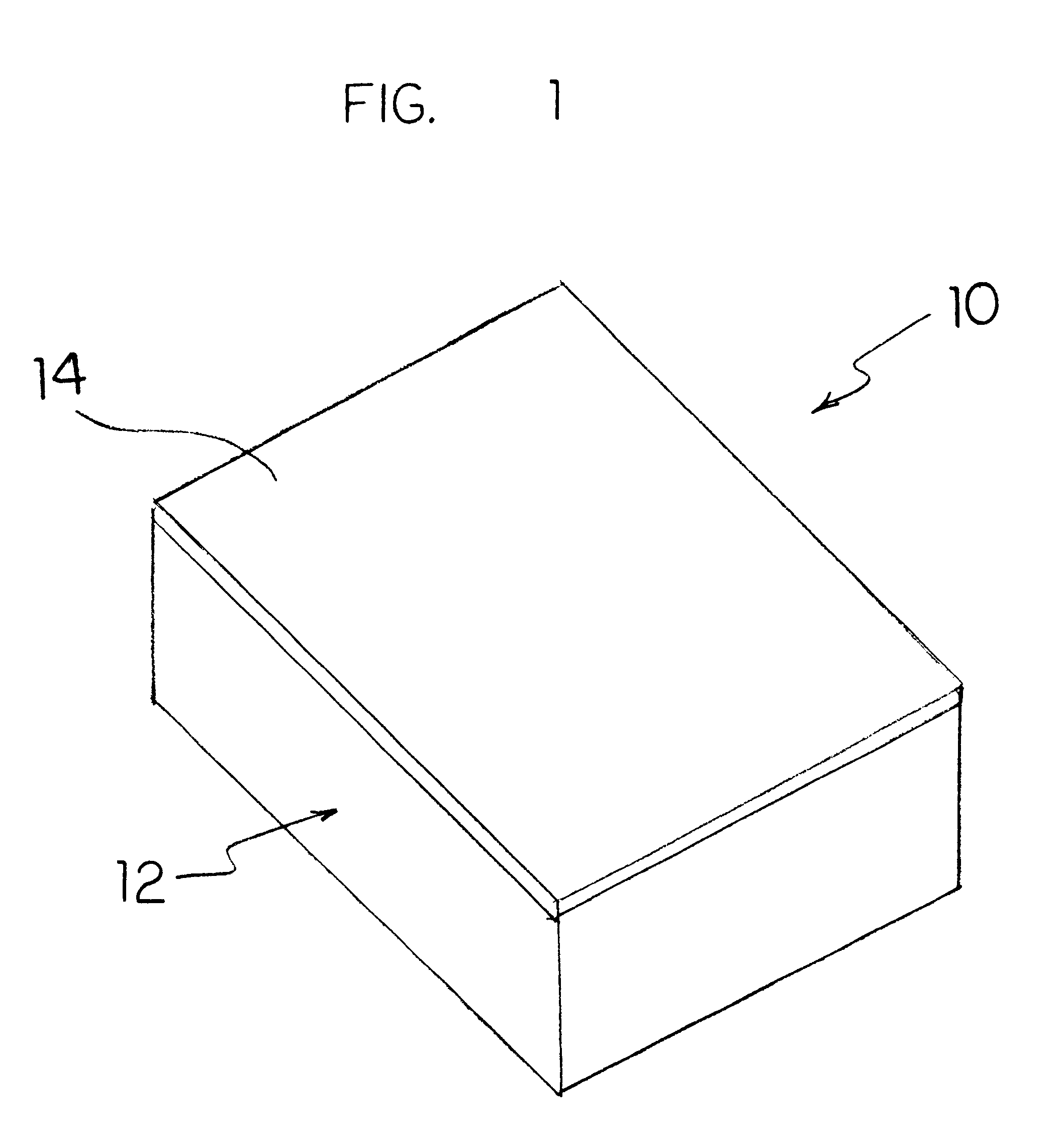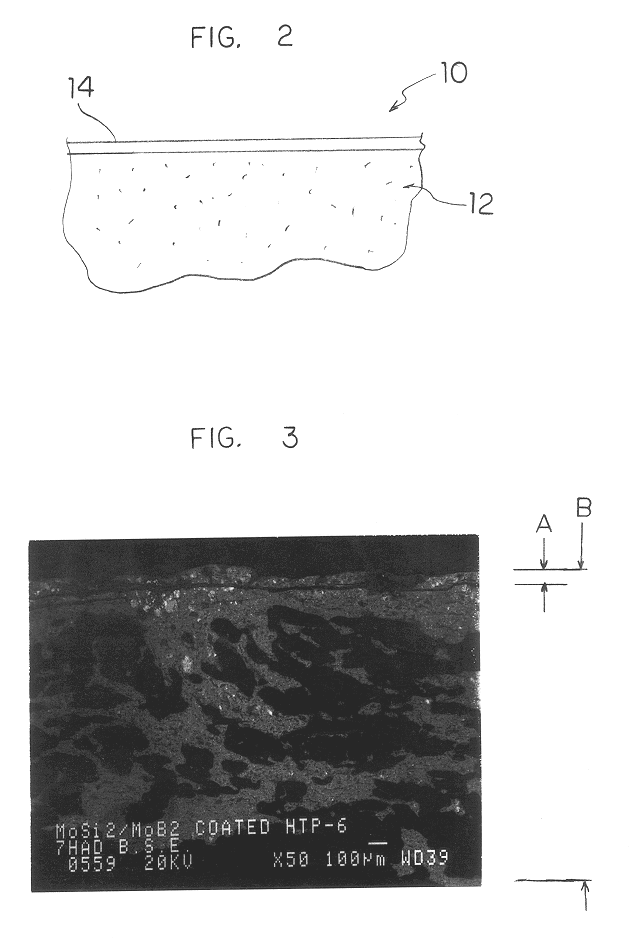Durable refractory ceramic coating
a technology of refractory ceramics and coatings, applied in the direction of cosmonautic thermal protection, machines/engines, cosmonautic vehicles, etc., can solve the problems of limited rcg's maximum temperature capability and relatively poor rcg resistance to impact, and achieve the effect of higher temperature capability
- Summary
- Abstract
- Description
- Claims
- Application Information
AI Technical Summary
Problems solved by technology
Method used
Image
Examples
Embodiment Construction
To make tiles used for the X-33 spacecraft, a slurry was created by using 43% by weight molybdenum silicide powder (100 mesh), 7% by weight boron nitride powder (325 mesh), 2.5% by weight liquid stock solution A, which is a polymer-based binder, and 47.5% denatured ethanol. These materials are combined and jar milled to produce a spray slurry which has a density of 11.5+ / -0.5 pounds per gallon, and a particle size distribution as follows:
The slurry is then sprayed to desired thickness and then dried at temperatures and times specified above.
Products made according to the present invention were tested against the prior art and were shown to have marked increases in thermal performance and durability. In a comparative burner rig test, refractory silicide coatings of the present invention were tested against a NASA Ames TUFI+RCG. Both the present coatings and the NASA coatings were made on a base structure made of HTP 8-22. The TUFI+RCG coating had a weight of 1.07 g / in.sup.2 and the p...
PUM
| Property | Measurement | Unit |
|---|---|---|
| temperature | aaaaa | aaaaa |
| temperature | aaaaa | aaaaa |
| melting point | aaaaa | aaaaa |
Abstract
Description
Claims
Application Information
 Login to View More
Login to View More - R&D
- Intellectual Property
- Life Sciences
- Materials
- Tech Scout
- Unparalleled Data Quality
- Higher Quality Content
- 60% Fewer Hallucinations
Browse by: Latest US Patents, China's latest patents, Technical Efficacy Thesaurus, Application Domain, Technology Topic, Popular Technical Reports.
© 2025 PatSnap. All rights reserved.Legal|Privacy policy|Modern Slavery Act Transparency Statement|Sitemap|About US| Contact US: help@patsnap.com



